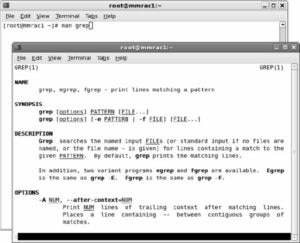Having the user interface and the terminal window for access to the command line means that there are a couple of ways to navigate through Linux and do what needs to be done. In previous examples of using the command line, files were edited, users were added, and parameters were set up. In managing some of the Oracle files and directories, it is useful to know some of the basic commands or how to look up the option for the commands. Changing directories, copying and moving files, editing, and looking at the content of the file are all basic actions in Linux (and the commands are almost the same as what is used in Unix, with a couple of possible differences in the parameter options). The following are some useful Linux commands, with a brief definition:
- pwd This shows the current directory (print working directory).
- more filename Lists the file.
- ls Lists the files in the directory.
- echo $VAR Shows value of variables or echoes back the text.
- mv filename newfilename Renames a file.
- cp filename /newdirectory Copies a file.
- rm filename Removes (deletes) a file; wildcards can be used but are not recommended for a root directory.
Manual pages are available to provide details for commands as well as available options. The man pages also provide examples for how to use the commands in the details of the page. This information can be accessed by typing man and then the command. The following is an example of the command, and Figure 1 shows the results of this command and what can be found in the man pages.

Leave a Reply